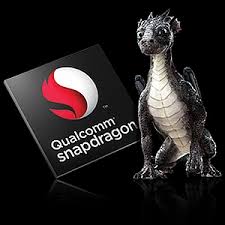
Qualcomm’s Certificate of Authorization (COA) – which the company says took a year to obtain – allows for outdoor testing of drones flying up to 200 feet, under specific restrictions, such as notifying the local air traffic control.
Even with the strict controls, the new authorization allows the chip maker to bring its R & D team local, allowing them to test right on campus rather than having to arrange for locations in the remote desert. Qualcomm says that it hopes the move will enable development in two major areas: Snapdragon Flight technology, introduced at this year’s CES show, and drone communications.
Snapdragon Flight is Qualcomm’s drone development platform, and the company hopes to enhance the remote operation and autonomous flight capabilities, saying in their announcement: “These algorithms, which utilize exclusive, highly advanced control and computer vision engines, enable a wide variety of critical operations for safety, including autonomous navigation, obstacle avoidance, waypoint to waypoint navigation, landing zone determination, stabilized hovering, and sensor-aided dead reckoning, among others.” The testing is critical for the chip maker as competitors rush into this market: Intel has introduced its Sense and Avoid “RealSense” technology, for example, while DJI‘s Phantom 4 with obstacle avoidance uses a Movidius chip.
The second area of research hopes to move the holy grail of drone delivery forward, testing drone to operator communications. “A reliable, robust, secure and efficient communications link is an essential component of safe UAS operations,” says the company. ““Lost link” scenarios, which cellular connectivity can help protect against, can present serious safety concerns, especially when drones are operating beyond visual line of sight (BVLOS).”
Qualcomm has invested heavily in drones in the past few years, in an attempt to move beyond the mobile phone market into the new industry. The recent announcement indicates the company’s continued heavy investment in drone technology R & D.
https://www.youtube.com/watch?v=7vkVgg1bFig

Miriam McNabb is the Editor-in-Chief of DRONELIFE and CEO of JobForDrones, a professional drone services marketplace, and a fascinated observer of the emerging drone industry and the regulatory environment for drones. Miriam has penned over 3,000 articles focused on the commercial drone space and is an international speaker and recognized figure in the industry. Miriam has a degree from the University of Chicago and over 20 years of experience in high tech sales and marketing for new technologies.
For drone industry consulting or writing, Email Miriam.
TWITTER:@spaldingbarker
Subscribe to DroneLife here.